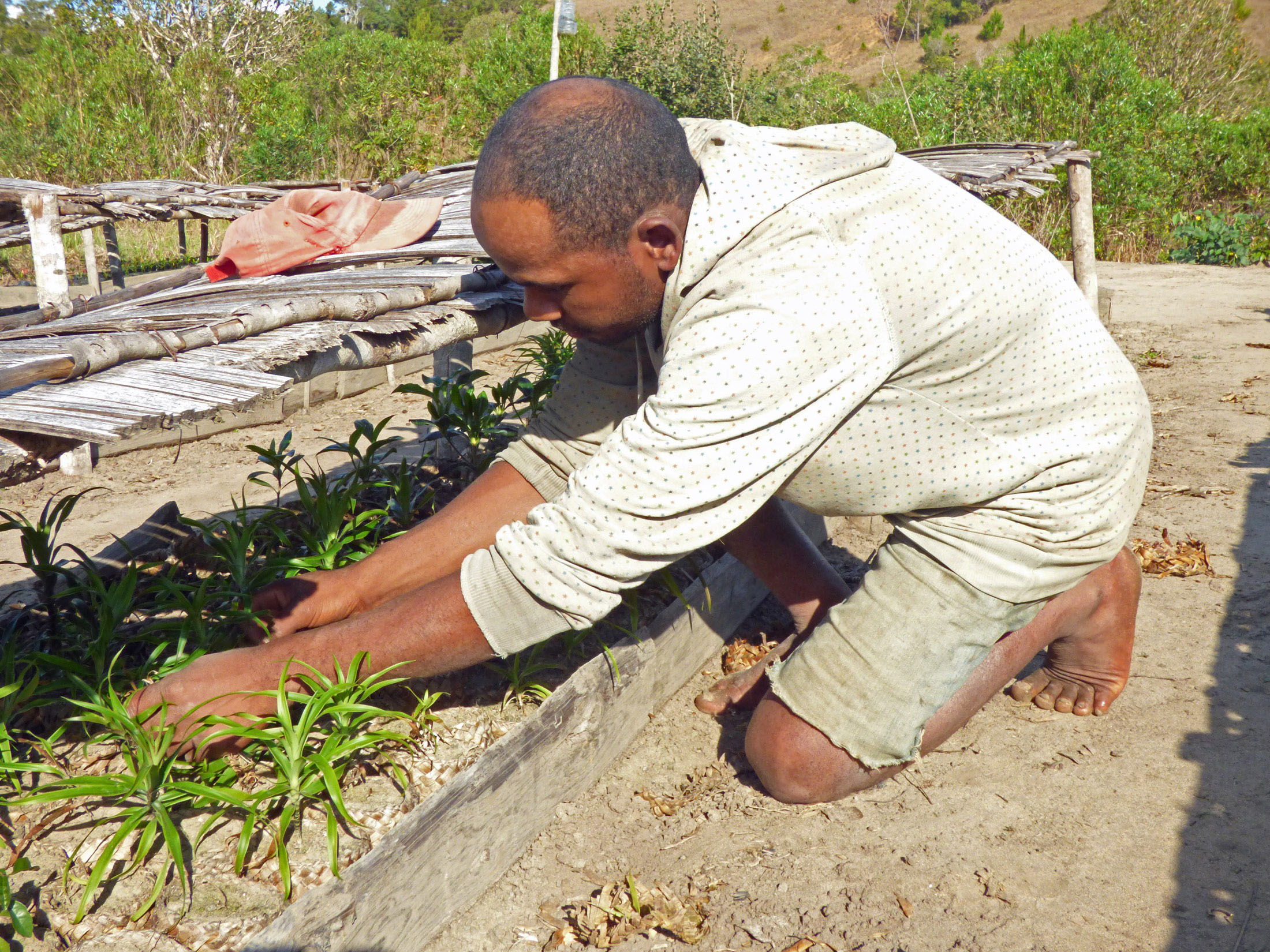Lemurs, Golden Frogs & New Rainforest Reserve
Madagascar
1st - 8th October 2026
hosted by directors of Aqua-Firma & partner conservation NGO
COVID stopped us from travelling out to Madagascar as planned in October, but our funding for habitat reconstruction continues in 76,000 acre reserve we helped set up in the centre of the country, back in 2015. These seedlings will be ready for planting in January when the rainy season kicks in. To avoid plastic waste, we paid local people to hand weave biodegradable grass pots which can be placed straight into the earth.
Our local partners at Voakajy have managed to propagate 13 local species of tree. All of these are capable of being planted on deforested land, with 4 of them able to enrich the soil using airborne nitrogen (nitrogen fixers). 5 of the tree species provide food for lemurs, which will encourage them to begin feeding in the area and disperse seeds more widely. One species called fanazava in Malagasy, is used locally to relieve stomach complaints.
Just over 2,000 forest trees will be planted, along with more than 1,500 fruiting trees which will be planted on community owned farmland. These fruiting trees are designed to help communities develop more sustainable ways of farming, moving away from slash and burn agriculture which has caused so much loss of wildlife and habitat in Madagascar.

October 2021 can't come fast enough to see these trees growing and the wildlife which benefits from it.
To find out how to join us amongst the rainforests, lemurs, rivers, hills and people of Madagascar, read about our Lemurs, Golden Frogs & New Rainforest Reserve journeys.